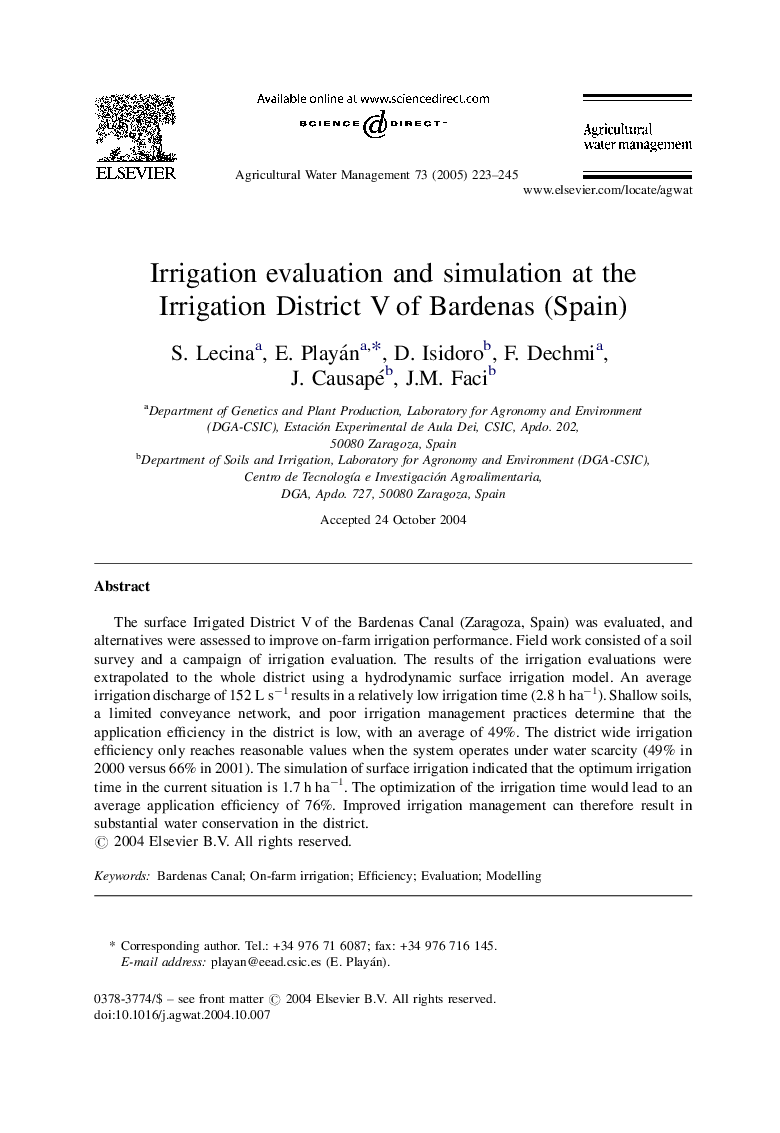| Article ID | Journal | Published Year | Pages | File Type |
|---|---|---|---|---|
| 9467424 | Agricultural Water Management | 2005 | 23 Pages |
Abstract
The surface Irrigated District V of the Bardenas Canal (Zaragoza, Spain) was evaluated, and alternatives were assessed to improve on-farm irrigation performance. Field work consisted of a soil survey and a campaign of irrigation evaluation. The results of the irrigation evaluations were extrapolated to the whole district using a hydrodynamic surface irrigation model. An average irrigation discharge of 152 L sâ1 results in a relatively low irrigation time (2.8 h haâ1). Shallow soils, a limited conveyance network, and poor irrigation management practices determine that the application efficiency in the district is low, with an average of 49%. The district wide irrigation efficiency only reaches reasonable values when the system operates under water scarcity (49% in 2000 versus 66% in 2001). The simulation of surface irrigation indicated that the optimum irrigation time in the current situation is 1.7 h haâ1. The optimization of the irrigation time would lead to an average application efficiency of 76%. Improved irrigation management can therefore result in substantial water conservation in the district.
Keywords
Related Topics
Life Sciences
Agricultural and Biological Sciences
Agronomy and Crop Science
Authors
S. Lecina, E. Playán, D. Isidoro, F. Dechmi, J. Causapé, J.M. Faci,
